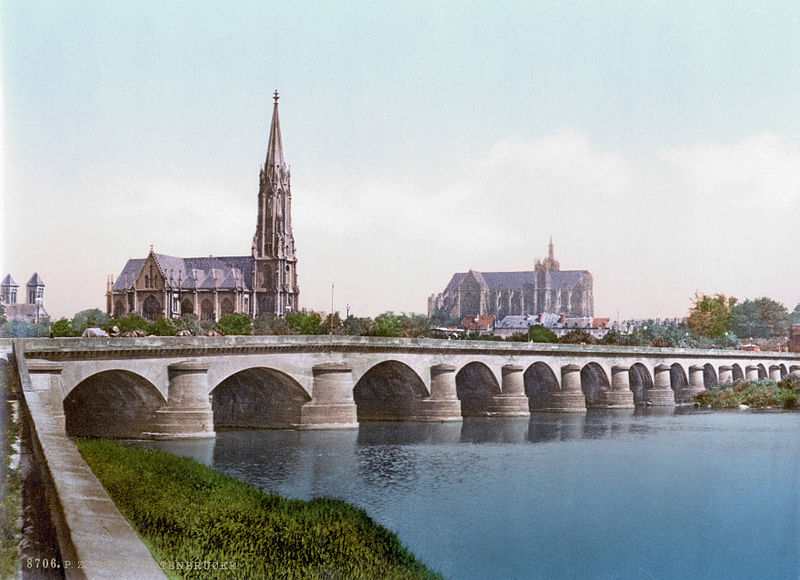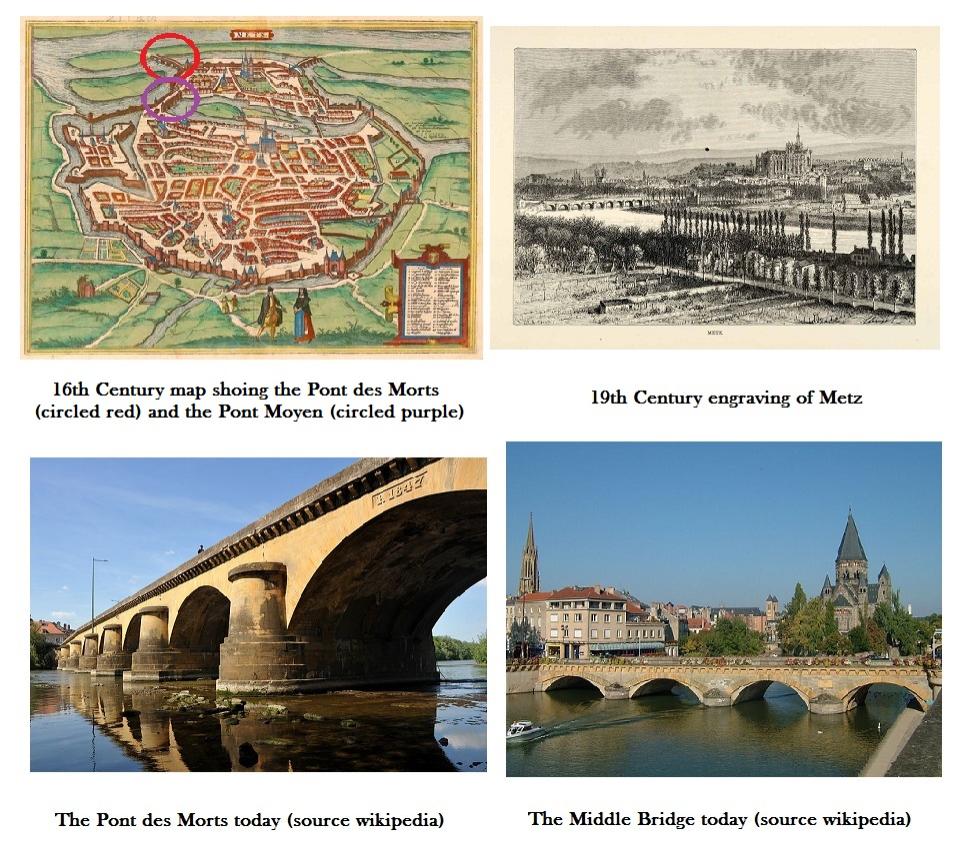
The Pont des Morts in 1900 (early colour postcard)
A TALE OF TWO BRIDGES
HOW METZ'S PONT DES MORTS GOT ITS NAME
Two of the oldest bridges in the French city of Metz are the Pont Moyen (Middle Bridge) and the Grand Pont des Morts (Grand Bridge of the Dead) and there are several stories explaining the latter’s macabre name.
During the Middle Ages a wooden bridge connecting the city’s Isle of Chambière with the north bank of the River Moselle was built and criminals sentenced to death by drowning were hurled from its parapet!
However, a more likely explanation for the name, is the strange tax imposed on Metz’s dying citizens. A bishop’s charter dated the 8th of March 1222 required all those spending their last days in the city’s hospital of St Nicholas had to surrender their best suit of clothes. Later, the money raised from this tax was used to replace the aforementioned wooden bridge with the magnificent stone structure that still stands today.
A BRIEF HISTORY OF THE GRAND PONT DES MORTS
1267 - A wooden bridge over the Moselle is built on or around this date.
1282 - The city’s master alderman decides to build a stone bridge.
1343 - The fifteen arched stone bridge is completed.
1513 – Due to erosion two additional arches are added.
1776 – The medieval bridge is repaired and strengthened.
1847 – The bridge is remodelled and lengthened by four meters.
1871 – After the Franco-Prussian War, Metz is annexed by the German Empire and the bridge is renamed the Totenbrücke.
1918 - When Metz is returned to France after WWI the bridge resumes its original name.
1944 – Towards the end of WWII the bridge is badly damaged by the German army.
1957 - The bridge is again remodelled and two arches removed.
1986 – The foundations are strengthened by injecting concrete into the riverbed.
THE MIDDLE BRIDGE
An extension to Grand Bridge of the Dead, called the Middle Bridge, connects the Isle of Chambière with the centre of Metz. The Middle Bridge was built between 1282 and 1313 and was originally protected by a fortified gate, which was demolished in 1740. The bridge itself was partly demolished in 1862 but was later restored and lengthened. Like its big brother, the bridge was badly damaged towards the end of WWII with the two first arches being blown up by the retreating Germans. A wooden bridge served as a replacement until the masonry was repaired in 1955.
On early maps the Middle Bridge is called the Ponts des Grilles and the opening, which allowed a portcullis to be lowered so as to close access to the city by water, can still be seen. The foundations of the fortified gateway’s tower are also still visible. In the 18th century, this tower was home to a wire maker and a saw mill. Later, in the 19th century, the tower housed the city’s public baths and today the two bridges provide the setting for Thomas Devilstone's most daring escape!

